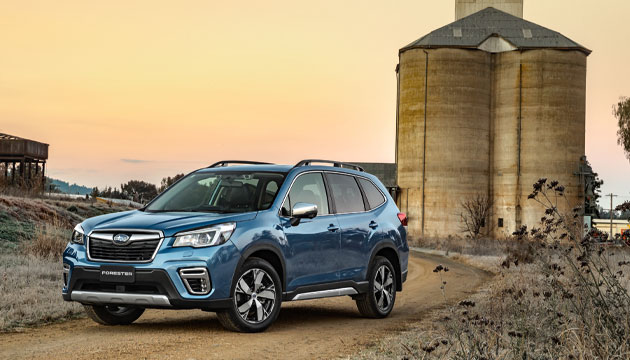The fifth generation Subaru Forester is smarter than ever before.
Story Bruce McMahon
Subaru’s Forester was a pioneer of the Sport Utility Vehicle genre and continues to impress as a competent all-rounder for Australian highways and byways.
The fifth generation of the all-wheel-drive wagon – a little bigger inside and with better engine performance – also boasts some of the industry’s most comprehensive driver aids, including Subaru’s EyeSight, which scans the road ahead for signs of trouble. Among fresh safety technologies, this Forester has a driver monitoring system that can recognise a distracted driver and flash up a dashboard warning. Yet, for all the bells and whistles, it is the MY19 Subaru Forester’s new-found pep that first impresses. Here, the 2.5-litre boxer engine (with four cylinders horizontally opposed, like the original Volkswagen Beetle powerplant) sports 136kW of power and 239Nm of torque. While maximum power and torque arrive quite high in the rev range, there is better low-down response than before. Some of that is due to a revision of the Forester’s continuously variable transmission (CVT) for smarter reaction times.
Subaru has long been committed to the boxer engine and all-wheel drive transmissions as a perfect pairing for equal, and relatively low, weight distribution for better road handling and grip.
The Japanese car-maker has long been building passenger-style cars with off-road ability, so the Forester was a natural addition to the range back in the late 1990s. From that beginning through to 2018, the Forester has been highly rated by consumers and critics alike. This new model is already picking up motoring awards. But while it is packed with fresh features, the latest Subaru Forester does not stray far from the original concept.
The body is a ‘two-box’ wagon, 4.6 metres long with four doors and one-piece rear tailgate. The cabin now has more leg room between the two rows of seats, allowing improved comfort for rear-seat passengers – perfect for three children and possible for three adults.
A host of electronic safety features keep driver and Forester on the straight and narrow, from lane keep assist and lane sway warning to pre-collision brake assist. There is even a warning if the vehicle ahead has moved off. All this technology is commendable, though it results in a very busy dashboard and instrument cluster.
Hit the start-stop button, pull back into drive and the Forester is off the mark with enough go from the 2.5-litre engine for town or highway work. The CVT is smart enough and there is a manual mode to slip through seven ‘steps’ of the belt transmission if the slurring of the CVT becomes annoying.
The ride is comfortable, the steering light and there is always traction. It may not handle like its sporting sibling, the WRX, but this is a safe and reassuring family drive under all conditions. On gravel roads, dirt tracks, sand or snow, the Forester shines. All-wheel drive allows the wagon to find traction, and 220 millimetres of ground clearance gives the driver confidence that the Forester will not bottom out in the ruts. If the track turns slow and nasty, there is Subaru’s x-mode available at the push of a button to steady delivery of power and torque, while helping drivetrain and brakes better deliver traction at lower off-road speeds. The range-topping Forester 2.5i-S offers an even smarter x-mode for varying track conditions.
There are many reasons why Australians have bought more than 250,000 Subaru Foresters over 21 years and this new generation should continue to appeal as a compact SUV with the ability to tackle all manner of conditions. And, unlike many rivals, the Forester still arrives with a full-sized spare wheel.
This story excerpt is from Issue #124
Outback Magazine: April/May 2019










